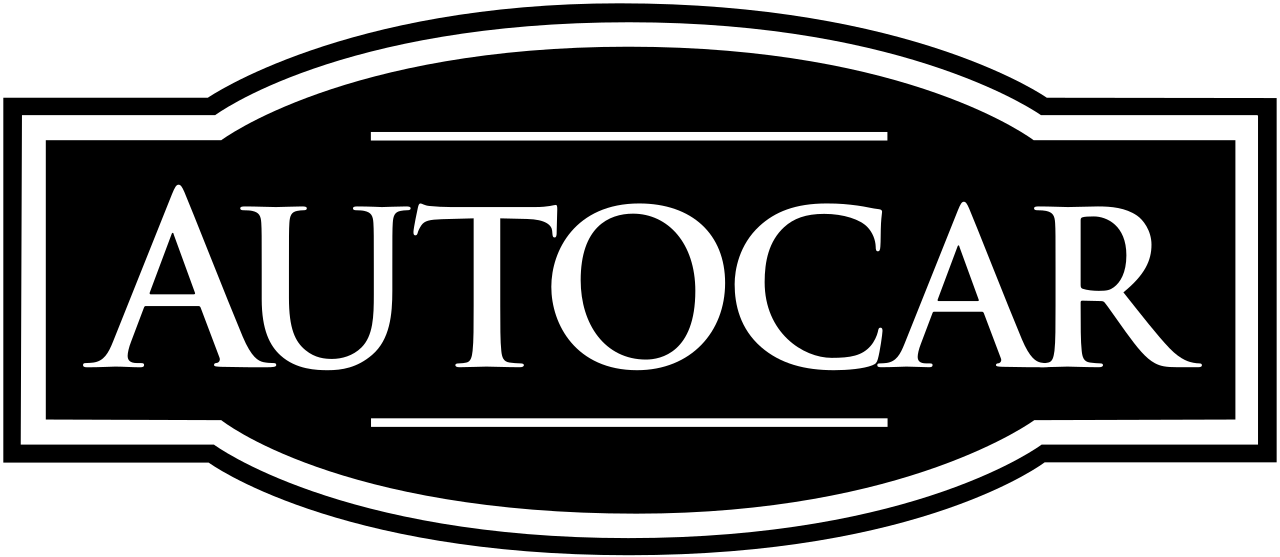Stedi maintains this guide based on public documentation from Autocar. Contact Autocar for official EDI specifications. To report any errors in this guide, please contact us.

X12 830 Planning Schedule with Release Capability
—
Delimiters
- ~ Segment
- * Element
- > Component
Powered by
Build EDI implementation guides at stedi.com
Overview
ISA
-
Interchange Control Header
Max use 1
Required
GS
-
Functional Group Header
Max use 1
Required
heading
GE
-
Functional Group Trailer
Max use 1
Required
IEA
-
Interchange Control Trailer
Max use 1
Required
—
- 00
- No Authorization Information Present (No Meaningful Information in I02)
—
- 00
- No Security Information Present (No Meaningful Information in I04)
—
- U
- U.S. EDI Community of ASC X12, TDCC, and UCS
—
- 00401
- Draft Standards for Trial Use Approved for Publication by ASC X12 Procedures Review Board through October 1997
—
- 0
- No Acknowledgment Requested
- 1
- Interchange Acknowledgment Requested
—
- PS
- Planning Schedule with Release Capability (830)
—
- T
- Transportation Data Coordinating Committee (TDCC)
- X
- Accredited Standards Committee X12
Heading
BFR
020
Heading > BFR
Beginning Segment for Planning Schedule
RequiredMax use 1
—
Example
At least one of Reference Identification (BFR-02) or Release Number (BFR-03) is required
N1 Loop Ship To
Max 1
Variants (all may be used)
N1 Loop Supplier/ManufacturerN1
230
Heading > N1 Loop Ship To > N1
Name
RequiredMax use 1
—
Example
At least one of Name (N1-02) or Identification Code Qualifier (N1-03) is required
If either Identification Code Qualifier (N1-03) or Identification Code (N1-04) is present, then the other is required
REF
270
Heading > N1 Loop Ship To > REF
Reference Identification
Max use 12
—
Example
At least one of Reference Identification (REF-02) or Description (REF-03) is required
N1 Loop Ship To end
N1 Loop Supplier/Manufacturer
Max 1
Variants (all may be used)
N1 Loop Ship ToN1
230
Heading > N1 Loop Supplier/Manufacturer > N1
Name
RequiredMax use 1
—
Example
At least one of Name (N1-02) or Identification Code Qualifier (N1-03) is required
If either Identification Code Qualifier (N1-03) or Identification Code (N1-04) is present, then the other is required
REF
270
Heading > N1 Loop Supplier/Manufacturer > REF
Reference Identification
Max use 12
—
Example
At least one of Reference Identification (REF-02) or Description (REF-03) is required
N1 Loop Supplier/Manufacturer end
Heading end
Detail
LIN Loop
RequiredMax >1
LIN
010
Detail > LIN Loop > LIN
Item Identification
RequiredMax use 1
—
Example
If either Product/Service ID Qualifier (LIN-04) or Product/Service ID (LIN-05) is present, then the other is required
ATH
230
Detail > LIN Loop > ATH
Resource Authorization
RequiredMax use 20
—
Example
At least one of Date (ATH-02) or Quantity (ATH-03) is required
If Quantity (ATH-03) is present, then Date (ATH-05) is required
If Quantity (ATH-04) is present, then Date (ATH-05) is required
SDP Loop
RequiredMax >1
FST
460
Detail > LIN Loop > SDP Loop > FST
Forecast Schedule
Max use 260
—
Example
If either Reference Identification Qualifier (FST-08) or Reference Identification (FST-09) is present, then the other is required
—
- D
- Discrete
- F
- Flexible Interval (from Date X through Date Y)
- M
- Monthly Bucket (Calendar Months)
- W
- Weekly Bucket (Monday through Sunday)
SDP Loop end
SHP Loop
Max >1
SHP
470
Detail > LIN Loop > SHP Loop > SHP
Shipped/Received Information
RequiredMax use 1
—
Example
If Quantity Qualifier (SHP-01) is present, then Quantity (SHP-02) is required
If Date (SHP-04) is present, then Date/Time Qualifier (SHP-03) is required
SHP Loop end
LIN Loop end
Detail end
Summary
Summary end
EDI Samples
Sample 1
ISA*00* *00* *ZZ*SENDER *ZZ*RECEIVER *231120*2301*U*00401*000000001*0*T*>~
GS*PS*SENDERGS*RECEIVERGS*20231120*230152*000000001*X*004010~
ST*830*0003~
BFR*05*1804261**SH*A*20180101*20181015*20180426***PO116337~
N1*ST**92*2000~
N1*SU**92*10005085~
LIN**BP*A2300166-001*PO*PO116337~
UIT*EA~
PER*EX*ANALYST-X26~
ATH*FI*20180502*17**20180101~
ATH*MT*20180512*17**20180101~
ATH*PQ*20180425*16**20180101~
SDP*Y*Y~
FST*4*A*D*20180424~
FST*0*C*D*20180426~
FST*0*C*D*20180427~
FST*0*C*D*20180428~
FST*0*C*D*20180429~
FST*0*C*D*20180430~
FST*0*C*D*20180501~
FST*1*C*D*20180502~
FST*0*C*D*20180503~
FST*0*C*D*20180504~
FST*0*C*D*20180505~
FST*0*C*D*20180506~
FST*0*C*D*20180507~
FST*0*C*D*20180508~
FST*0*C*D*20180509~
FST*0*C*D*20180510~
FST*0*C*D*20180511~
FST*0*C*D*20180512~
FST*0*C*D*20180513~
FST*0*C*D*20180514~
FST*0*C*D*20180515~
FST*2*C*D*20180516~
FST*0*C*D*20180517~
FST*0*C*D*20180518~
FST*0*C*D*20180519~
FST*0*C*D*20180520~
FST*0*C*D*20180521~
FST*0*C*D*20180522~
FST*0*C*D*20180523~
FST*0*C*D*20180524~
FST*0*C*D*20180525~
FST*0*C*D*20180526~
FST*0*C*D*20180527~
FST*0*C*D*20180528~
FST*0*C*D*20180529~
FST*0*C*D*20180530~
FST*0*C*D*20180531~
FST*0*C*D*20180601~
FST*0*C*D*20180602~
FST*0*C*D*20180603~
FST*0*C*D*20180604~
SHP*01*2*011*20180416~
REF*SI*149632~
SHP*02*12*011*20180101**20180416~
LIN**BP*A2300167-001*PO*PO116337~
UIT*EA~
PER*EX*ANALYST-X26~
ATH*FI*20180101*3**20180502~
ATH*MT*20180101*3**20180509~
ATH*PQ*20180101*3**20180425~
SDP*Y*Y~
FST*0*C*D*20180426~
FST*0*C*D*20180427~
FST*0*C*D*20180428~
FST*0*C*D*20180429~
FST*0*C*D*20180430~
FST*0*C*D*20180501~
FST*0*C*D*20180502~
FST*0*C*D*20180503~
FST*0*C*D*20180504~
FST*0*C*D*20180505~
FST*0*C*D*20180506~
FST*0*C*D*20180507~
SHP*01*7*011*20180411~
REF*SI*149137~
SHP*02*114*011*20180101**20180411~
CTT*5*283~
SE*79*0003~
GE*1*000000001~
IEA*1*000000001~
GS*PS*SENDERGS*RECEIVERGS*20231120*230152*000000001*X*004010~
ST*830*0003~
BFR*05*1804261**SH*A*20180101*20181015*20180426***PO116337~
N1*ST**92*2000~
N1*SU**92*10005085~
LIN**BP*A2300166-001*PO*PO116337~
UIT*EA~
PER*EX*ANALYST-X26~
ATH*FI*20180502*17**20180101~
ATH*MT*20180512*17**20180101~
ATH*PQ*20180425*16**20180101~
SDP*Y*Y~
FST*4*A*D*20180424~
FST*0*C*D*20180426~
FST*0*C*D*20180427~
FST*0*C*D*20180428~
FST*0*C*D*20180429~
FST*0*C*D*20180430~
FST*0*C*D*20180501~
FST*1*C*D*20180502~
FST*0*C*D*20180503~
FST*0*C*D*20180504~
FST*0*C*D*20180505~
FST*0*C*D*20180506~
FST*0*C*D*20180507~
FST*0*C*D*20180508~
FST*0*C*D*20180509~
FST*0*C*D*20180510~
FST*0*C*D*20180511~
FST*0*C*D*20180512~
FST*0*C*D*20180513~
FST*0*C*D*20180514~
FST*0*C*D*20180515~
FST*2*C*D*20180516~
FST*0*C*D*20180517~
FST*0*C*D*20180518~
FST*0*C*D*20180519~
FST*0*C*D*20180520~
FST*0*C*D*20180521~
FST*0*C*D*20180522~
FST*0*C*D*20180523~
FST*0*C*D*20180524~
FST*0*C*D*20180525~
FST*0*C*D*20180526~
FST*0*C*D*20180527~
FST*0*C*D*20180528~
FST*0*C*D*20180529~
FST*0*C*D*20180530~
FST*0*C*D*20180531~
FST*0*C*D*20180601~
FST*0*C*D*20180602~
FST*0*C*D*20180603~
FST*0*C*D*20180604~
SHP*01*2*011*20180416~
REF*SI*149632~
SHP*02*12*011*20180101**20180416~
LIN**BP*A2300167-001*PO*PO116337~
UIT*EA~
PER*EX*ANALYST-X26~
ATH*FI*20180101*3**20180502~
ATH*MT*20180101*3**20180509~
ATH*PQ*20180101*3**20180425~
SDP*Y*Y~
FST*0*C*D*20180426~
FST*0*C*D*20180427~
FST*0*C*D*20180428~
FST*0*C*D*20180429~
FST*0*C*D*20180430~
FST*0*C*D*20180501~
FST*0*C*D*20180502~
FST*0*C*D*20180503~
FST*0*C*D*20180504~
FST*0*C*D*20180505~
FST*0*C*D*20180506~
FST*0*C*D*20180507~
SHP*01*7*011*20180411~
REF*SI*149137~
SHP*02*114*011*20180101**20180411~
CTT*5*283~
SE*79*0003~
GE*1*000000001~
IEA*1*000000001~
Stedi is a registered trademark of Stedi, Inc. All names, logos, and brands of third parties listed on this page are trademarks of their respective owners (including “X12”, which is a trademark of X12 Incorporated). Stedi, Inc. and its products and services are not endorsed by, sponsored by, or affiliated with these third parties. Use of these names, logos, and brands is for identification purposes only, and does not imply any such endorsement, sponsorship, or affiliation.